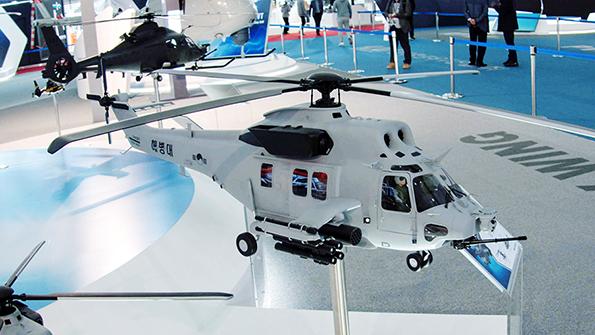
South Korea has already once chosen a helicopter with a bulky and unnecessary cabin for the attack role. Within a few months it may do so again.
First was the Airbus H155, which is being updated as the LCH civil helicopter and derivative LAH armed helicopter for the Republic of Korea Army, with all production transferred to Korea Aerospace Industries (KAI). The second could be the KAI Surion, which is in army and marines service as a utility aircraft and is proposed as an attack helicopter for the marines.
- Assessment agency backs Surion, and media criticize it
- KAI works toward 2023 LCH-LAH deliveries
The defense ministry’s evaluation office reportedly has recommended the Surion adaptation over foreign alternatives, mostly from the U.S. A final decision should be made no later than August, according to an industry official from a South Korean company with an interest in the program.
Meanwhile, KAI is working toward handing over the first LCH and first LAH in 2023. For LAH exports, the company is targeting countries where it has already sold other products. Several Southeast Asian countries are likely to be intended customers.
Possible selection of the Surion for the marines is attracting strong criticism in the South Korean media, however. And the army rejected the type for the attack role in 2013, preferring the Boeing AH-64E Apache. The latest proposal is to add weapons and sensors to the marines’ utility version of the Surion, the MUH-1. This meets the marines’ requirement, the industry source said.
As a domestic product, the twin-engine type could expect strong support from politicians for a new order. The Republic of Korea Marine Corps requires 24 attack helicopters. The defense ministry plans to spend 1 trillion South Korean won ($834 million) on the acquisition, the Chosun Ilbo newspaper reported in 2019.
The MUH-1 already has features to facilitate operations at sea, notably folding main rotor blades. The MUH-1 attack version would have armament comparable to that of the Bell AH-1Z Viper and AH-64E. Sensors and weapon-control equipment will come from the LAH, and communications will be modified from the LAH and MUH-1 systems. The Surion is powered by the T700-701K engine developed and built by General Electric and Hanwha.
The evaluation office, the Defense Agency for Technology and Quality, assessed the MUH-1 attack version against the Viper, Apache, Sikorsky S-70i and the Turkish Aerospace Industries T-129, the Asian Economy newspaper said in April. Following a yearlong study, the agency reported that domestic development was appropriate for the requirement and that the unit price would be 37 billion South Korean won, SBS television said. Inexpensive operation and maintenance would more than offset a high acquisition cost, according to a Chosun Ilbo report on the study.
The Surion’s most obvious disadvantage for the attack role is that it would take the weight and target area of a large cabin into combat, whereas dedicated attack helicopters have compact fuselages. This is a compromise that the army was forced to accept with the LAH. In that case, the industry ministry—which is partly paying for the program—insisted that the chosen type have a passenger cabin so it would be adaptable to civil use.
All five LCH-LAH prototypes are flying. As planned, the LCH segment is running ahead of work on the LAH.
The LCH is also running approximately on time. The program is working toward getting an amended type certificate (TC) from the European Union Aviation Safety Agency (EASA) in September, KAI says; in 2015, the target was 2020. Beyond that, KAI is aiming to get production organization approval from EASA in 2021, with which it can put the H155 into volume production (under the new names). An army requirement for 200 helicopters underpins the program.
Flight testing for the amended TC has been completed, KAI said. The first LCH prototype, built by Airbus in France, flew ahead of schedule in July 2018. KAI built the second at its Sacheon works in South Korea and began flying it in December 2019. It is being used to gain a supplementary TC from South Korean authorities. By late April, half of that work had been done.
KAI says it began marketing the LCH in early 2020, with the proposed roles being executive transport, ambulance services, law enforcement and firefighting. It has no customer so far, but KAI cannot deliver before the first half of 2023 anyway.
The LAH is basically an LCH with military equipment. LAH flight testing “is supposed to be performed by the end of 2022 in order to evaluate and verify its flight performance and weapon operation,” KAI says. The first LAH prototype flew in July 2019 and the other two took flight in August.
First delivery is still due in 2023—as it has been since 2018 or earlier—but when the defense ministry chose KAI and Airbus for the program five years ago the army was supposed to begin receiving LAHs in 2022. The ministry has not yet “confirmed” an order, KAI says.






